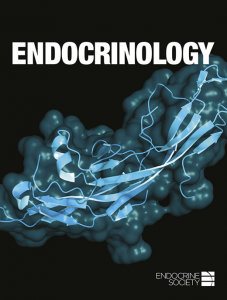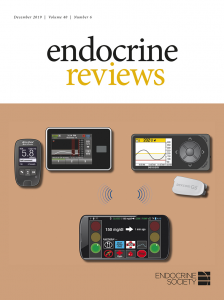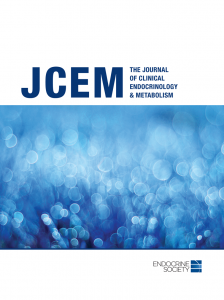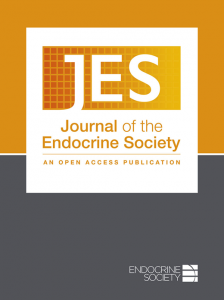For the fifth year in a row, Endocrine News spoke with editors from Endocrine Society journals to get the scoop on the top endocrine discoveries of 2019. Here is part 1 of Eureka! 2019.
Editor-in-chief Teresa K. Woodruff, PhD, professor of Obstetrics and Gynecology, Medical Social Sciences, and Medicine at the Feinberg School of Medicine at Northwestern University in Chicago, Ill., listed four papers of note from Endocrinology, two on metabolic health and two on development.
In “Sex Differences in Inflammatory Responses to Adipose Tissue Lipolysis in Diet-Induced Obesity,” published in February, Singer, K., et. al. tease out a mechanism underlying sexual dimorphism in metabolic health. Chronic inflammation in obesity can lead to such serious complications as type 2 diabetes, cardiovascular diseases, hypertension, and atherosclerosis. Females exhibit less inflammation in obesity from high-fat diets than do males, and the researchers posit that this difference could be mediated by sex-related variation in lipolytic metabolites. Using a mouse model, they demonstrated that females’ enhanced ability to store gonadal white adipose tissue led to induced adipocyte remodeling.
Sudo, N., et. al. answer an important question about anorexia nervosa that until now had remained unclear. In “The Gut Microbiome Derived from Anorexia Nervosa Patients Impairs Weight Gain and Behavioral Performance in Female Mice,” from October, they show that mice given microbiota from human patients with the restricting type of anorexia nervosa (as opposed to the binge-eating type) ate less and accordingly gained less weight than control mice; exhibited anxiety-related, compulsive behavior; and had lower brainstem serotonin levels. Their ability to convert ingested food to unit of body substance was also impaired. Thus, gut dysbiosis, specifically, lower concentrations of certain species of microorganisms, appears to be a driver of the metabolic and neuropsychiatric abnormalities in anorexia nervosa.
Tsukamura, H., et. al. further elucidate how estrogenic chemicals contribute to male infertility in “Neonatal Estrogen Causes Irreversible Male Infertility via Specific Suppressive Action on Hypothalamic Kiss1 Neurons” from May. Neonatal treatment with estradiol benzoate lasting 10 days resulted in smaller seminiferous tubules, abnormal spermatogenesis, and decreased plasma testosterone in adult male rats. Researchers report that this reproductive dysfunction is likely due to irreversible suppression of kisspeptin–neurokinin B–dynorphin A neurons in the arcuate nucleus from chronic estrogen exposure.
From August, “Transgenerational Bisphenol A Causes Deficits in Social Recognition and Alters Postsynaptic Density Genes in Mice” likewise looks at the effects of endocrine-disrupting chemicals on development. Rissman, E.F., et. al. bred second-generation mice exposed to bisphenol A (BPA) and examined the brains of the offspring with polymerase chain reaction (PCR) after observing their live behavior for a period.
Mice whose great-grandmothers were exposed to BPA during pregnancy showed no curiosity about new mice introduced to the group, which is strikingly aberrant mouse behavior. The researchers found that BPA exposure in third-generation mice disrupted social interactions and caused abnormal expression of excitatory postsynaptic densities genes known to be associated with neurobehavioral disorders like autism and attention deficit hyperactivity disorder. These transgenerational effects of BPA exposure will therefore be seen for some time to come, even if BPA were banned today.
Below are the studies from the “Eureka 2019!” article in the December Endocrine News:

Sex Differences in Inflammatory Responses to Adipose Tissue Lipolysis in Diet-Induced Obesity,” Singer, K., et. al. February 2019
“Fibroblast Growth Factor-21 Controls Dietary Protein Intake in Male Mice,” Ryan, K.K., et. al. fMay 2019
“The Gut Microbiome Derived from Anorexia Nervosa Patients Impairs Weight Gain and Behavioral Performance in Female Mice,” Sudo, N., et. al. October 2019
“Neonatal Estrogen Causes Irreversible Male Infertility via Specific Suppressive Action on Hypothalamic Kiss1 Neurons,” Tsukamura, H., et. al. May 2019
“Transgenerational Bisphenol A Causes Deficits in Social Recognition and Alters Postsynaptic Density Genes in Mice,” Rissman, E.F., et. al. August 2019
“Gestational Diabetes Adversely Affects Pancreatic Islet Architecture and Function in the Male Rat Offspring,” Dolinsky, V.W., et. al. August 2019

“Genetic Risk Scores for Diabetes Diagnosis and Precision Medicine,” Mahajan A., et al. July 2019

“Lipid Metabolism Links Nutrient-Exercise Timing to Insulin Sensitivity in Men Classified as Overweight or Obese,” Wallis G.A. and Gonzalez J.T., et. al. October 2019
“DNA Methylation of Tumor Suppressor Genes in Pituitary Neuroendocrine Tumors,” Picó A., et. al. April 2019

“Depression in Nonclassical Hypogonadism in Young Men,” Korenman, S.G. November 2018
“Magnetic Resonance Imaging Reveals Human Brown Adipose Tissue Is Rapidly Activated in Response to Cold,” Steinberg, G.R. and Morrison, K.M., et. al. October 2019
“E-Cigarette Exposure Delays Implantation and Causes Reduced Weight Gain in Female Offspring Exposed In Utero,” Caron K.M., et. al. October 2019
New England Journal of Medicine
“An Anti-CD3 Antibody, Teplizumab, in Relatives at Risk for Type 1 Diabetes,” Herold, K.C., et. al. August 2019

